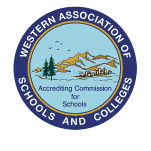Dr. Monica Burns, founder of ClassTechTips.com and edtech and curriculum consultant, discusses how parents should think about picking an edtech product at home, what a content vetting process could look like, and how important it is for parents to model a healthy relationship with technology.
The Internet holds a near endless supply of knowledge for our problem solvers of tomorrow. But vetting that knowledge and sifting through what’s appropriate can be time-consuming for the parent or educator co-viewing the material.
Luckily, there are strategies and tools to help educators take a proactive approach to edtech at home, but you have to know where to look.
In this episode, Dr. Monica Burns, founder of ClassTechTips.com and edtech and curriculum consultant, discusses how to get started and why the risks are worth the reward of online learning.
Managing Risks and Rewards with EdTech
Education technology is opening up an incredible number of ways to expand student offerings. It’s important to remember, however, that the opportunity is still new — complete with its own set of risks that parents and educators will want to avoid if they want to ease the learning experience.
The first way to avoid these risks is to keep your goals front and center. Before you bring on any new technology, make sure it’s furthering whatever your goal may be — from student interests to boosting engagement. A focus on your goals also helps prevent wasted investment in products that may not be as useful as they look upfront.

Picking Your Channel: Podcasts and YouTube
Podcasts are a tool that can be consumed online or off, and can include activities like follow-along coloring book pages to keep students engaged. While many options come at a cost, there is also a plethora of free choices a parent or educator can choose from if they’re not ready to invest money into the endeavor.
Another great, yet slightly controversial, resource is YouTube. With so many distractions, it might seem surprising that Monica praises the platform as such a good option. However, just like with podcasts, parents or educators need to steer their students in the right direction.
Monica suggests looking for content creators or providers that you’re familiar with as a pre-vetted option for your students, such as:
- Discovery Channel
- Ted Ed or Ted Talks
- Smithsonian Channel
- History Channel
These providers will all have podcast or YouTube channel options to pick from. But just picking creators you trust isn’t enough. There’s still vetting to do before you can be sure your student is watching what they need to be watching.

Tech-Friendly Creative Projects
Beyond podcasts and streaming services like YouTube, there are a lot of consumer-facing products that have gone down the route of education, such as Adobe Express — a tool that Monica has used with her students to create family slideshows, a web page full of pictures for an upcoming event, or an invitation to a barbecue.
Vetting Content and the Benefits of Co-Learning
While resources like Ted Talks or the Discovery Channel might have lots of great podcast episodes or videos that will help your student, that doesn’t guarantee that every episode will align with your student goals.
You might select a video on YouTube from Ted Ed about agriculture and then leave your student to their own devices. But when that video finishes, it might automatically select a video on dentistry or a video from an un-vetted source.
.png)
To eliminate this risk, Monica suggests co-viewing the material with your student. It not only helps the educator keep the material aligned, but it gives the added opportunity to model for your student.
Imagine the next video about to automatically play on YouTube is from a source you're suspicious about. You can then walk through your process of researching the source with the student to make sure it's appropriate for the lesson. While the student may not fully grasp your entire process of vetting the source, they’ll learn to question their sources if it’s not immediately obvious who it is.
Modeling Behaviors and Next Steps for Parents
Educational technology is a huge step forward for making student learning more flexible and personalized.
Monica’s last and biggest piece of advice is to model healthy tech behavior. When you’re co-viewing a YouTube video, is your attention split between watching and scrolling through your phone?
Students watch everything you do. Help them get the most out of edtech by not only vetting your sources and co-viewing the material with your student, but also by modeling the kind of behavior that will solidify these lessons.
Guest Links and resource recommendations
--
This episode was brought to you by Art of Problem Solving, where students train to become the great problem solvers of tomorrow.
To get weekly episode summaries right to your inbox, follow the podcast at the bottom of this page or anywhere you get podcasts. Ideas for the show? Reach us at podcast@aops.com.

















